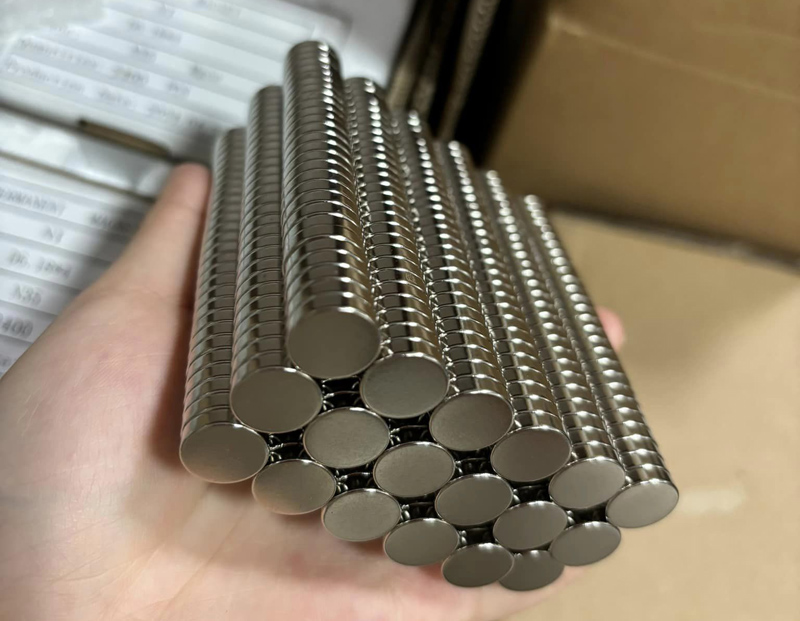Magnets are ubiquitous in our daily lives and are used in an extremely wide range of applications, from small magnetic strips on refrigerator doors to complex industrial equipment. However, the properties of magnets do not remain constant under all conditions, especially when temperatures change. In this article, we will introduce you to the question of whether magnets lose their strength when heated.
Magnets are able to produce a magnetic field because of the presence of an orderly arrangement of magnetic domains within them. The magnetic moments of the atoms within the magnetic domains are aligned to form a macroscopic magnetism. Different types of magnets (e.g., ferrite, neodymium iron boron, samarium cobalt, etc.) have different magnetic properties due to different material properties.
Nickel-plated round neodymium magnets.

The effect of temperature on magnets;
Each magnetic material has a specific temperature point, called the Curie temperature, above which the material loses its ferromagnetism and changes to paramagnetism. This is because the high temperature destroys the orderly arrangement of magnetic domains and makes the atomic magnetic moments randomly distributed.
As the temperature increases, the magnet's coercivity (ability to resist the effects of an external magnetic field) decreases, resulting in the magnet being more easily magnetized or demagnetized.
Heating also causes a decrease in the magnet's remanence (the magnet's ability to retain its magnetic properties after an external magnetic field has been removed), meaning that the magnet may no longer have its original magnetic strength after heating.
Between the maximum operating temperature and the Curie temperature, the magnet may experience an irreversible loss of performance.
Details of different grades of temperature resistance of NdFeB: Neodymium Temperature Range (Rating)
Take NdFeB, SmCo and Ferrite for example, which are commonly used in the market;
NdFeB magnets have very high remanent magnetization and coercivity, but their Curie point is relatively low, between about 310°C and 400°C. This means that neodymium-iron-boron magnets begin to lose their magnetic properties as they approach this temperature.
Samarium cobalt magnets have a higher Curie point, around 700°C to 800°C, and therefore maintain better magnetic properties at higher temperatures. However, as the temperature increases, the coercivity and remanent magnetization of Samarium Cobalt magnets will gradually decrease.
Ferrite magnets have a higher Curie point of about 400°C to 450°C, but their magnetic properties are more sensitive to temperature changes, and even at lower temperatures, the magnetic properties will be weakened.
Therefore, magnets do lose strength when heated, especially when the temperature approaches or exceeds their Curie point.
Other magnet strength issues;
Magnetic Field Strength vs. Material Type
 China Neodymium And Ferrite Magnets Manufacturer & Supplier
China Neodymium And Ferrite Magnets Manufacturer & Supplier 


